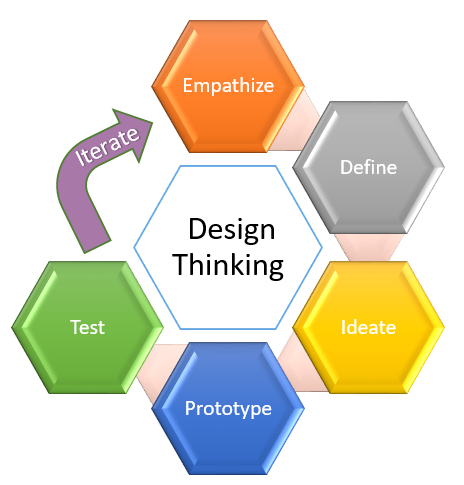
4.13. ASSESSMENT: Non-AP Create 1¶
Time Estimate: 6 hours (8 45 minute classes) minimum
Follow these directions if you are taking a Non-AP CSP course. If you are taking CSP as an AP course, please go to the previous lesson for the AP Create directions.
4.13.1. Introduction and Goals¶
In this Create Project #1, you will work with a partner to design a socially useful interactive app, that demonstrates algorithms such as selection and procedural abstractions. As you develop your project keep track of significant errors and bugs that you encountered and how you solved or debugged them in a journal.
Please review non-AP instructions and rubric below:
- Design Thinking Process: Design a Chair Warm Up Activity
- Create Task with Design Thinking
- Non-AP Create Performance Task Rubric
4.13.2. Learning Activities¶
Iterative Design Thinking Process
Use an Iterative Design Thinking Process to develop your app:
Iterations
|
 |
Warm Up Activity: Design a Chair
Your teacher may have you do the following Design Thinking Process: Design a Chair Activity in pairs or groups to practice the Design Thinking Process.
Create Task Directions
For the Non-AP version of the Create Task, we recommend that you work with a partner using pair or buddy programming to create a socially-useful app. With your partner, follow the iterative development process in Create Task with Design Thinking. Here is what you need to turn in at each iteration.
Iteration 1: Paper Prototype
Before you start creating the app in App Inventor, you will brainstorm ideas on paper with a partner and present an elevator pitch to your class. Turn in the following:
- Description of Problem [Empathize, Define, and Ideate]: Working in pairs, think about problems in your community and how an app might help to solve those problems or to help people in your community. Who is the target audience or users who will be using the app? What problem does the app address? How does the app address the problem?
- Paper Prototypes [Prototype]: Create paper prototypes of three different brainstorm ideas. Describe what each UI element will do.
- Elevator Pitch: Present a short (2-3 minute) elevator pitch of your project idea to the class. The pitch could follow this template:
[name of app] is a [kind of thing] for [the people who would use it or problem it would solve] that, unlike [similar apps] is able to [the major distinguishing feature of your app]. - Feedback [Test]: Other students should provide feedback answering the following questions. Is the app presented socially useful why or why not? What is a strength of the proposed app? What suggestions do you have to improve the app?
Iteration 2: Minimal App
Working in pairs, create a minimal working app. Turn in the following:
- Minimal app [Prototype and Test]: Build an initial prototype with minimal functions for your app with your partner.
- Journal [Define and Ideate]: As you work, keep a journal of your development process and problems encountered and how you solved them. Complete a journal entry using this journal entry template.
Iteration 3 and On:
- Enhanced App [Prototype and Test]: Iteratively add and test new features for your app, meeting the grading guidelines. For the Create 1 project, your project should have at least 1 variable, 1 procedure that you have defined, and use an if block.
- Documentation of Code: For this assignment, a well documented app means having well named components, variables, and procedures.
- Data: For this assignment, your app should make appropriate use of variables.
- Algorithms: For this assignment, your app should math and/or logic operations (math and if blocks) and procedures.
- Abstraction: For this assignment, your app should include a programmer defined procedure.
- Journal [Define and Ideate]: Keep a journal of your development process and problems encountered and how you solved them. Complete a journal entry using this journal entry template.
Submission:
When you are finished with your app, your teacher may ask you to turn in some or all of the following:
- Video: Create a 1 minute anonymous video presentation providing a demo of your working app. See How To: Create an App Video for help with creating a video.
- Distribution Flyer/Summary: Summarize your app in one page. Be sure to include links to the AIA file, APK file, a QR code to install your app following How To: Share Your App, links to the video, screenshot, and a link to the write up.
- Write up: Create a portfolio write up of your project. Include a link to your video, your app's aia file and a QR code to install your app following the directions in How To: Create a Portfolio Write Up.
- Class Presentation: Present your app to your class with your partner. Tell them the app’s purpose. Show them how it works. Let students in the class try out your app with the QR code. Describe 1 difficulty you encountered during the development process and how you solved it. Your classmates can use the App Feedback Template to give you feedback.
Grading:
Your teacher may use the following Non-AP Create Performance Task Rubric or something similar to grade your Create project.